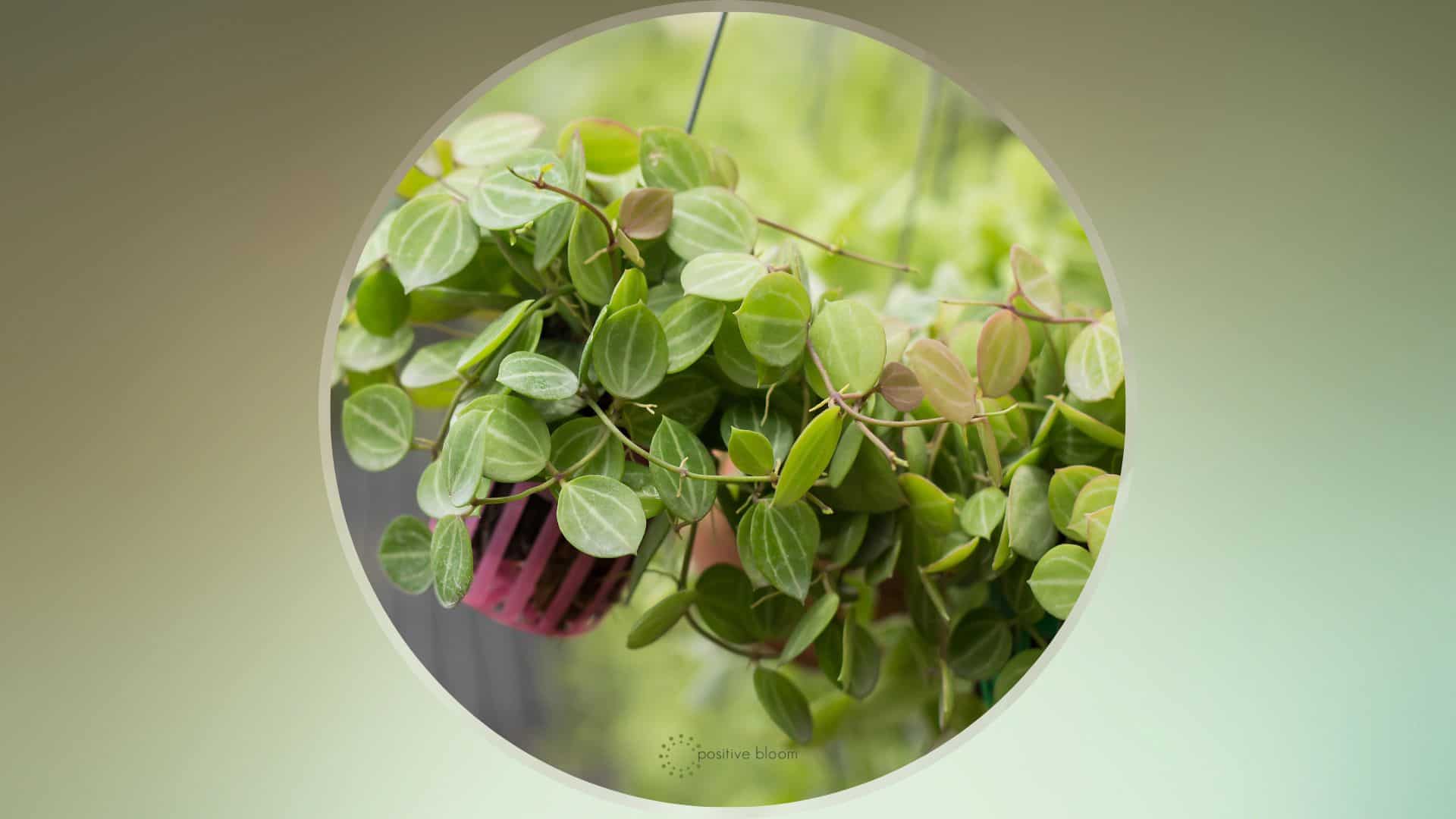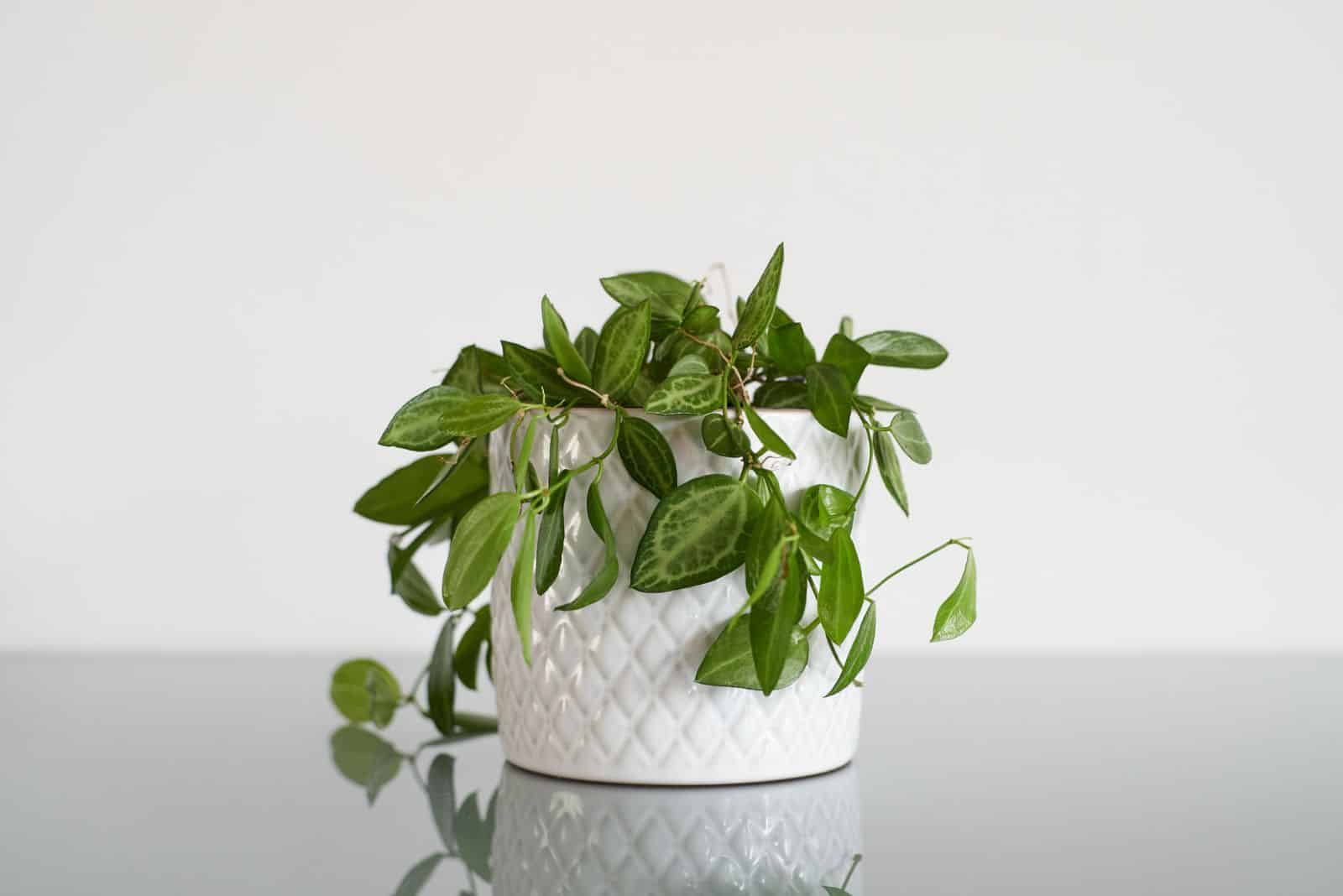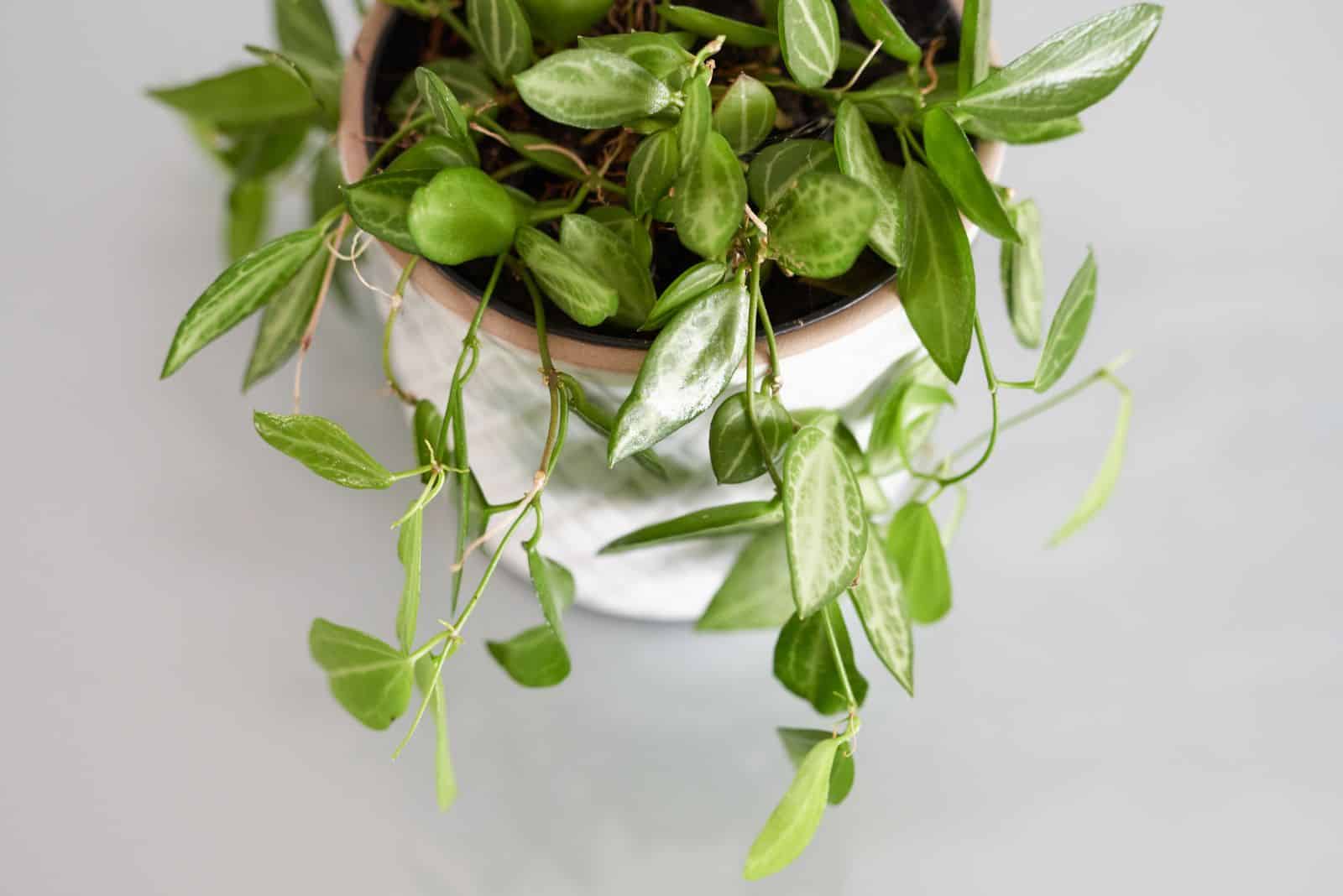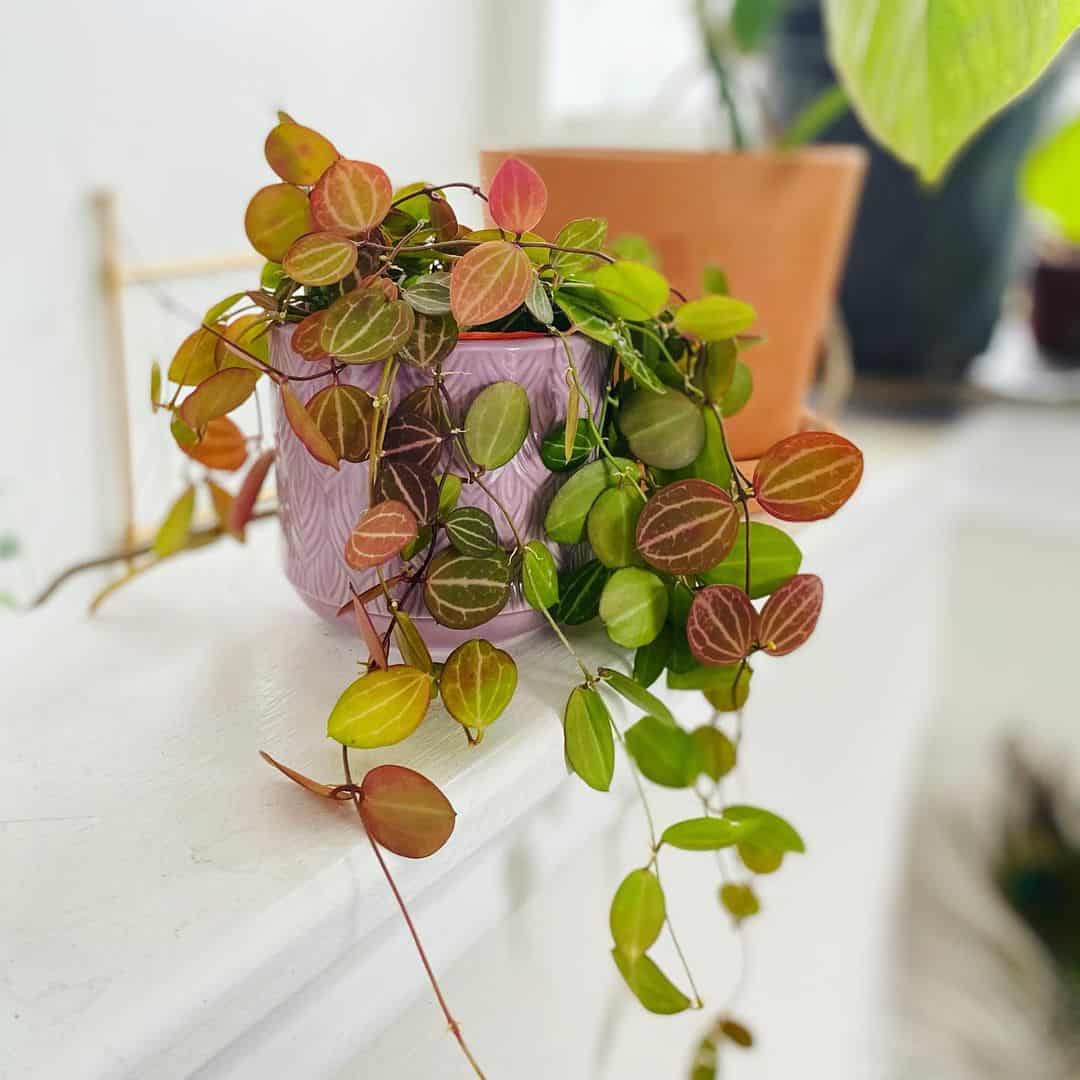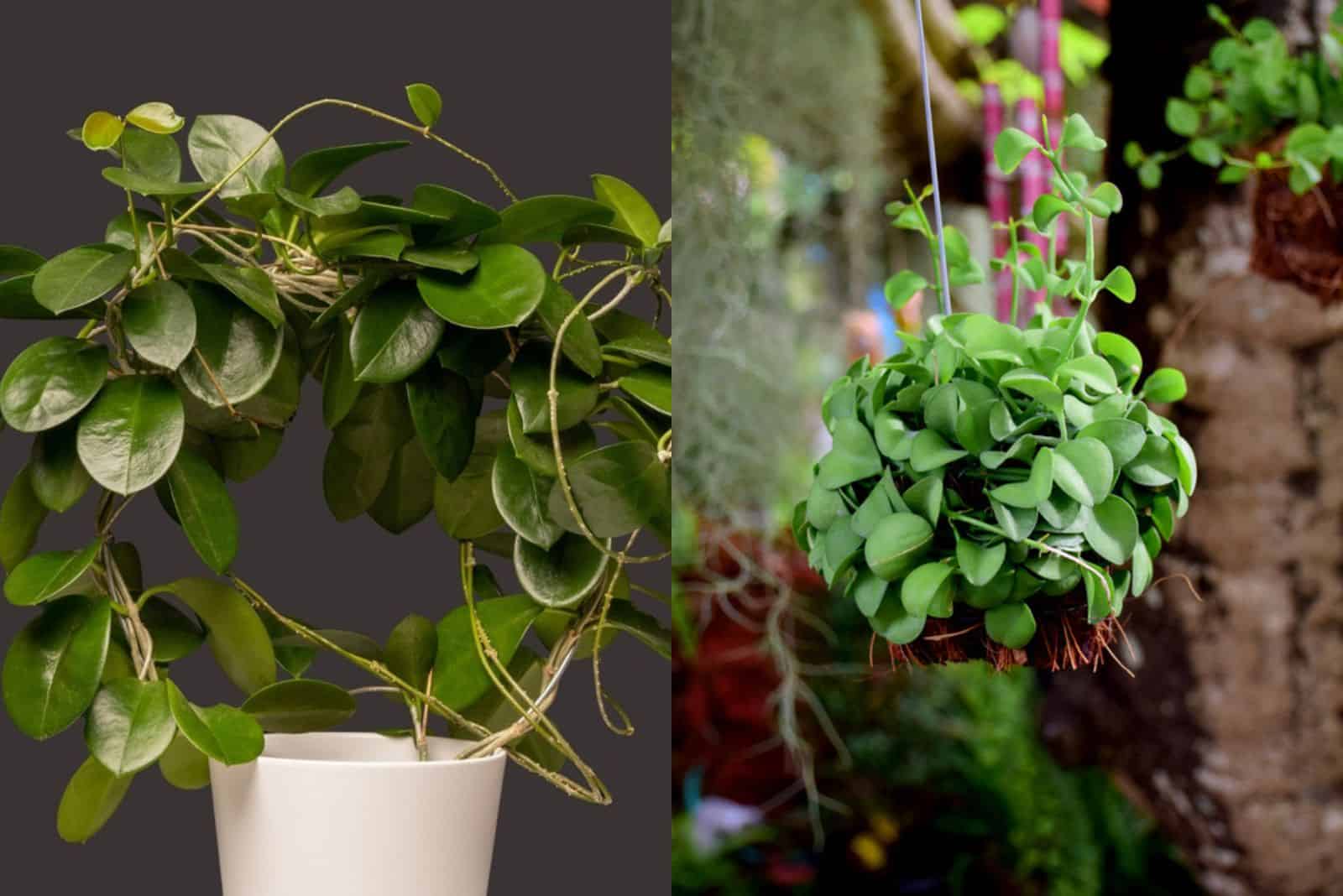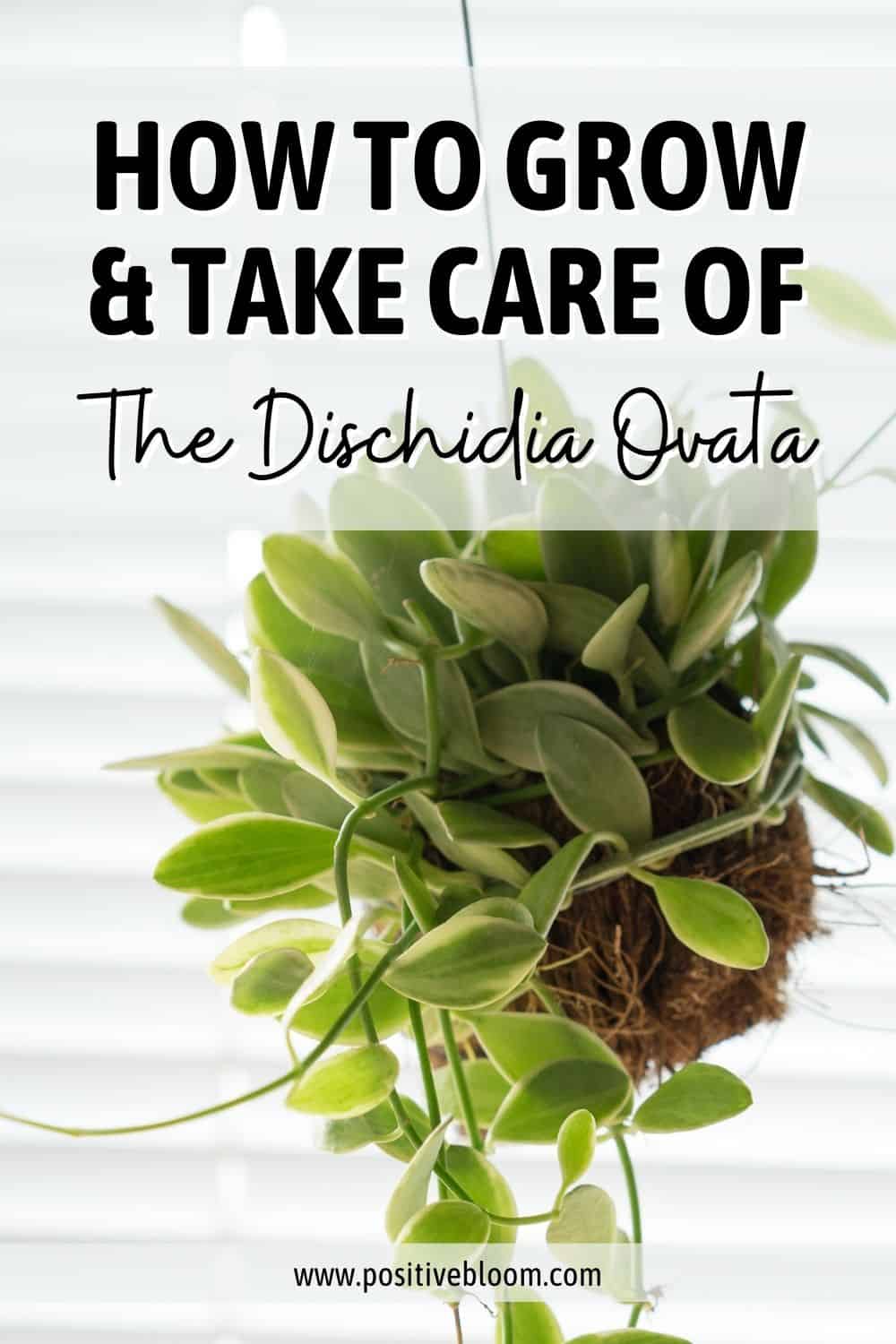If you want a plant that looks like a hoya and feels like a succulent, then the Dischidia ovata is the right choice for you.
This variety is easy to care for, looks amazing, and fits perfectly in hanging baskets or coffee table pots.
We’ll also discuss some common problems you might encounter when nurturing it, such as pests and diseases, and present some tips and tricks for how to deal with them.
Finally, all plants love company, which is why we also included some fantastic species you can grow alongside this plant.
(Psst… they have the same care guide, so you won’t have to do any extra work!)
Before we dive into all that, let’s learn some general specifics about this plant:
[table id=572 /]
Dischidia Ovata Care Guide
When we compare the care guide for the Dischidia ruscifolia to the one for the watermelon dischidia (which is a common name for Dischidia ovata), we’ll notice that they’re awfully similar.
Just like the Million hearts plant, the D. ovata requires indirect light, moist soil, and a loose and well-draining potting medium.
Of course, knowing how to fertilize, propagate, repot, and prune this plant wouldn’t hurt either, so we will go through a step-by-step guide on all these things.
Light Requirements
The watermelon dischidia thrives in bright indirect light, so the best places you can put it are near east- and south-facing windows.
You can also grow it close to western windows, but you should filter the sun by closing the curtains or moving your plant at least 3 feet away from it.
On the other hand, if this epiphytic plant doesn’t get enough sunlight, it may turn leggy, so you should grow it under grow lights if your home isn’t well sun-lit.
Water And Humidity
To nurture a healthy plant, you should water your watermelon dischidia only when the top few inches of the soil are dry to the touch.
Pour water until it drains out through the holes in the bottom, and reduce the watering frequency in winter when this plant enters dormancy.
Even though this plant is technically a succulent, it cannot survive long periods of time without water, so remember to irrigate it every once in a while.
You can also try using rice water for plants since it’s perfect for misting succulents and can quench your dischidia’s thirst, repel pests, and even replenish some of the nutrients it needs.
Humidity
These plants have moderate humidity requirements, so they’re perfectly fine with average household air moisture.
However, the air is drier in winter because of heaters and radiators, so you should use humidifiers or pebble trays to keep your plant thriving.
You can also mist it occasionally if you prefer that option, just don’t keep the leaves constantly wet, or else your plant might get a fungal disease like leaf spot.
Temperature
This plant is hardy in USDA zone 10, which means it can survive temperatures down to 40°F, although it thrives when temperatures are between 55-90°F, so you should try and grow it in these conditions.
It cannot grow properly when the temperatures are lower than 50°F, so you shouldn’t grow it near AC vents, heaters, drafty windows, and doors since these locations experience sudden temperature swings and can stress your plant.
Potting Mix And Fertilizer
The best potting medium for this plant is well-draining and loose, such as a blend of equal parts coco chips, potting soil, and perlite (or horticultural sand). You can also add orchid bark and sphagnum moss if you’re out of coco chips.
The most important thing is to avoid creating a heavy and compacted potting mix. Once you make the soil (or get a well-draining blend from the garden store), you can fill the pot with it.
Fertilizer
Fertilization is part of almost every plant care guide, this one included. The best time to feed is throughout its growing season, starting in spring.
The good news is that you can use any general-purpose houseplant fertilizer; just dilute it in water to at least half-strength and use it to fertilize your D. ovata once a month.
Dischidia Ovata Propagation
Growers propagate the watermelon dischidia through stem cuttings, which is fairly easy to do as you don’t have to take any cuttings.
Fill the new container with a potting medium designed for these plants. (Make sure it is quite moist, which can help propagation).
Take the end part of your plant (the one with the tip) and pin it down to the soil using a wire or any other material. Ensure that the leaf node is in the potting mix, and your plant will soon take root. Once it does, you can cut the stem which connects the two plants.
You’ll soon notice new leaves growing and know the propagation was a success.
Here is a quick video that will help you multiply your plants and complete your houseplant collection:
Repotting The Watermelon Dischidia
The best time to repot the D. ovata is during its growing season (spring and summer) since it can acclimate to the fresh soil and a new container before the winter comes.
Transplant it every 2-3 years, and don’t use enormous containers since they can retain more moisture and lead to overwatering. Always opt for one that is just slightly larger than your plant’s root system.
The Watermelon Dischidia In a Terrarium
This plant can be a great decoration, especially if you grow it in a glass vessel, and making a succulent terrarium isn’t that difficult.
All you need is a good terrarium and a beautiful plant (such as D. ovata). Take a hanging glass terrarium, lay some materials for drainage (bark, rocks), and then fill it with this plant’s preferred potting mix.
Decorate it with any material you want, from wooden features to marbles, place it away from direct sun (bright indirect light works best), and care for it as you would if it were growing in a traditional container.
Common Issues With The Dischidia Ovata Succulent
This plant doesn’t easily succumb to pest infestations and diseases, but it can be afflicted, especially if you water it too often or neglect it.
Below you can read about the most common pests and illnesses that will attack your D. ovata and also discover some ways to treat them.
Pests
Common bugs that colonize the Dischidia ovata are aphids, mealybugs, thrips, scales, and spider mites. You can quickly get rid of them by applying some neem oil or insecticidal soaps.
However, if you prefer to go all-natural, you can always remove them with a Q-tip dipped in rubbing alcohol, pick them off by hand, or place the entire plant under a slow flow of water to knock off the insects.
Diseases
The most common infection that may befall your lovely Dischidia ovata is root rot, which is caused by overwatering. This disease results in yellowing leaves, stunted growth, wilting, wet soil, and a rotting smell spreading from the container.
If you notice these symptoms, take your plant out of the planter, remove the dirt and rinse the roots to expose all the diseased parts, and start trimming.
Cut away any dark, mushy, and soggy roots, spray the rest of them with a fungicide to prevent the return of the disease, and repot your D. ovata in fresh soil and a clean container.
And if you want to avoid dealing with root rot altogether, simply water this plant only when the top few inches of the potting medium are dry.
More About The Watermelon Dischidia
The Dischidia ovata belongs to the family Apocynaceae and originates from the tropical regions of Southeast Asia, northern parts of Queensland, and New Guinea.
It has a unique succulent appearance, and you can read more about it in the following section. We’ll also include some famous varieties that go well with this plant so that it can enjoy the company of a friend or two.
Features
This plant looks like a string of tiny watermelons due to the ovate-shaped leaves and white stripes that adorn them.
The tiny flowers resemble a half-open pouch colored mildly green-yellow and contoured with purple lines.
Other Plants That Go Well With This Houseplant
You can pair your watermelon dischidia with many indoor plants for a unique display. Still, if you want to stick to the genus Dischidia, there are some varieties you shouldn’t miss.
Million hearts plant (Dischidia ruscifolia) – Heart-shaped foliage and delightful white flowers will complement the ovate leaves of the watermelon dischidia perfectly.
String of nickels (Dischidia nummularia) – The coin-like foliage of the string of nickels plant makes it suitable for various designs, especially one including the D. ovata.
And if you want to create a display everyone would admire, simply place these plants in glass terrariums and hang them around your home.
FAQ
We’ve been through the watermelon dischidia care guide, but there are still some other important things to learn about this plant.
Many mistake it for a hoya, and below, you can learn about their differences and what to use a D. ovata for.
What is the difference between a Hoya and Dischidia?
Both the hoya and dischidia are epiphytic plants, but hoya varieties produce clusters of blossoms larger than dischidia blooms.
Dischidia flowers are also shaped like pouches, whereas the hoya bloom clusters are shaped into balls consisting of tiny star-shaped blossoms.
What can the Dischidia ovata be used for?
You can use the D. ovata to make unique tropical displays all over your home. It is also non-toxic to pets, so you don’t have to worry about putting it in higher places.
However, it looks incredible in glass terrariums, and you can place it wherever you want, as long as there’s enough indirect light for them to thrive.
Final Thoughts
The plant care guide for the Dischidia ovata is simple: plant it in a loose and well-drained potting mix, keep it in indirect sunlight, maintain moderate humidity levels, and water it once the topsoil dries out.
We also talked about fertilization, repotting, and the best propagation technique so that you can properly nurture your plant.
This article also included common pests and diseases you might have to deal with and ways of treating them. We also presented some interesting facts about this plant, such as its features and other varieties from the Dischidia genus you can pair it with.
All in all, it is a great plant suitable for beginners!
Until next time!
Like this post? Share or pin it for later!

